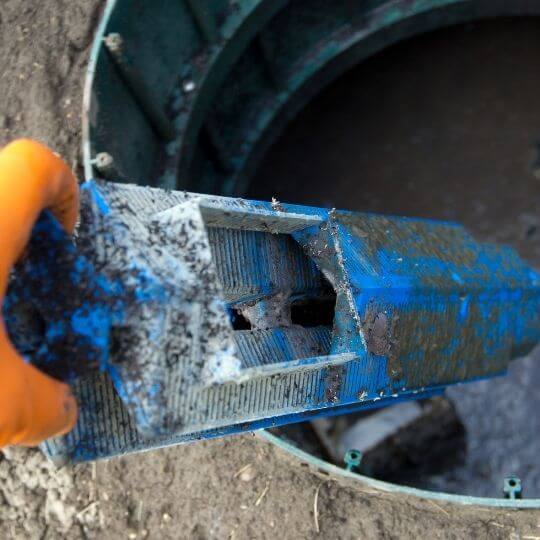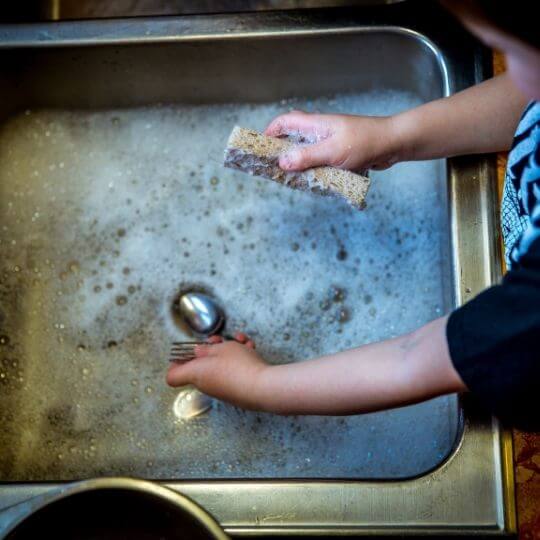Septic tanks serve an individual property, so they are more common in rural areas. They are an important part of a reliable plumbing system that removes wastewater. In order to work properly, septic tanks need beneficial bacteria to break down the waste. However, using antibacterial chemicals and other things that clog the sewage system can disturb this process. Knowing how to increase bacteria in septic tank naturally can be extremely beneficial in this case.
Keep reading to find out the safe ways in which you can achieve this.
Do I Need To Treat My Septic Tank?

Before we show you how to increase bacteria in the septic tank naturally, let’s consider if this treatment is even needed.
The anaerobic bacteria in the tank break down the waste into three parts:
- An upper layer of scum – composed of fats, oils, and greases
- The middle layer of effluent – composed of wastewater, which makes most of the tank
- The bottom layer of sludge – composed of heavier particles
Since there are bacteria in septic tanks, are septic tanks bad? No, the bacteria in septic tanks are of crucial importance, as they are what helps break down the waste.
To be clear – you promote the beneficial bacteria in the tank every time you flush the solid waste. However, many things can disturb the function of these bacteria.
That’s exactly when you end up with a full tank.
Luckily, there are always visible signs your septic tank is full. [1] Let’s shortly discuss some of those:
- Sewer backup
- A really healthy, green lawn – a good side effect of a full tank
- Odors – a bad smell around your septic tank may indicate a full tank or even a leak
- Slow drains – water draining slowly in your house in places like a toilet, a bath, or a sink
- Standing water – pooling water in your yard is a clear indicator of a full septic tank (unless it rained recently)
However, it’s really important to not treat the tank only when a serious situation like this comes up.
There is a general rule that a septic system needs to be pumped every 2-5 years. [2] So, the answer to the question is – yes, you need to treat your septic tank.
In other words, you need to treat the septic tank for maintenance – and not just when a huge problem arises!
How To Increase Bacteria In Septic Tank Naturally In 2 Steps

Now you know that a septic tank that never needs emptying is simply not true.
Either if you only want to maintain the beneficial bacteria, or you already have a huge septic tank problem – continue reading!
There are 2 steps for you to take in order to increase the bacteria in your septic tank:
- Septic tank bacteria treatments
- Awareness of what to avoid
- Septic Tank Bacteria Treatments
The best answer to How To Increase Bacteria In Septic Tank Naturally lies in using the products with natural bacteria. This is, indeed, the best septic tank treatment, as it doesn’t damage the pipes but it solves the problem.
You should treat a septic tank occasionally with some simple DIY products, or you can use the store-bought products.
This constant maintenance will ensure you never have to face a full tank problem again. Also, it will reduce the amount of time this system needs to be pumped.
An occasional DIY step you can try is to use rotten tomatoes. Rotten tomatoes are full of Pectinolyc enzymes and good bacteria, which can help increase the bacteria in your septic tank. [3]
About every 3 months, just squash the rotten tomatoes and flush them down your toilet.
Another thing you can try is the so-called Baking soda septic tank treatment. Baking soda is not only beneficial for cleaning around your house, it can be quite beneficial to your septic tank!
This is because most bacteria grow in a non-acidic environment.
What baking soda does is raise the pH levels in a septic system to a neutral level. This, in turn, makes the bacteria grow faster.
The next thing you could try is using a Septic tank cleaning powder. This is a product that you can buy, not a DIY treatment.
These products are specifically made for clearing out a septic tank. They do so by containing special additives that add beneficial bacteria to your septic tank.
Ridex septic additive and yeast are among the most common products for this use.
Ridex comes in powder form, but also in gel and liquid packs. It breaks down solids, waste, and oils.
Yeast breaks down oils, protein, and plant material while keeping the bacteria alive.
- Awareness of what to avoid
There are also several more things you can do to increase the bacteria in your septic tank. Almost all of them include properly disposing of waste.
Be aware that there are things you should avoid flushing down the toilet, such as:
- Diapers
- Feminine hygiene products
- Wet wipes
- Condoms
- Cat litter
- Cigarette buds
- Hair
…and many more. The general rule is – avoid flushing everything that isn’t toilet paper and human waste. In other words, avoid flushing everything that can’t easily dissolve in the water.
In particular, the things that can reduce the number of bacteria in the septic tank are antibacterial cleaning products. What you can do is switch to more organic cleaning products, such as baking soda and vinegar.
Certain medications, such as antibiotics, are also known for killing the bacteria in a septic tank. [4] This is especially the case with the prolonged disposal of medications and other chemicals in the sewage system.
Never flush unused medication and minimize the usage of antibacterial soaps, bleach, and other cleaners that aggressively kill bacteria.
How to Increase Bacteria in Septic Tank Naturally – Additional Tips

A huge part of taking care of your septic tank system comes down to the usage of the house water.
Try using water more efficiently.
Get in the habit of turning off the water when not needed (e.g. when applying soap to your hands). Small changes in the routine can make a huge difference over time.
You can also invest in high-efficiency toilets, washing machines, and other bathroom appliances that save water and reduce waste.
Lastly, include routine inspections of your septic tank. Not a single septic tank additive can replace an annual inspection of your septic tank.
This also includes having your tank routinely pumped every 3-5 years.
Routine pumping with the addition of occasional DIY maintenance will keep your septic tank system in a good condition for years. With the effective usage of water, you will also save up money and take care of the environment.
The Takeaway
The bacteria in your septic tank have a crucial role in breaking down the wastewater. Flushing non-flushable products and certain medications can reduce this bacteria.
In turn, this can damage or fill up the septic tank as the waste is not broken down properly.
Knowing how to increase bacteria in septic tank naturally by yourself is really important in this case. With the usage of certain DIY products, this is easily achievable.
Additionally, by effectively using the water and avoiding flushing certain products, you prolong the lifetime of your septic tank.

Michael Davis is a heating & plumbing expert who currently works as independent contractor in SC. He also writes for Plumbertip.
For almost 10 years he worked on various plumbing tasks across South Carolina.


